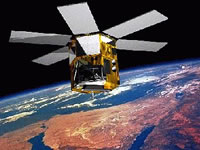 |
|
 |
| |
| |
| |
| |
| |
| |
| |
Campus: Kensington Campus
| |
| |
Career: Undergraduate
| |
| |
Units of Credit: 6
| |
| |
| |
| |
Contact Hours per Week: 4
| |
| |
Enrolment Requirements:
| |
| |
None
| |
| |
| |
| |
| |
 |
|
 |
Description
The fields of Geographic Information Systems and Remote Sensing have expanded considerably over the past decade and the world has become very much richer in digital geographic information. Vast amounts of geographic data are routinely collected and new sources of remotely sensed hyperspectral, radar and geophysical data are now available. These complex data, although providing previously unattainable information about the Earth, also reduce the efficacy of many traditional methods of analysis. An increased requirement to build applications-specific solutions and simulations has therefore become imperative in the context of the need to plan for eg. a changing climate, optimise agricultural productivity for an increasing population, and to provide niche marketing analysis for business. This course explores a range of highly complex, often non-deterministic, problems in GIS and Remote Sensing. It explores a true enabling technology for the natural sciences in addition to a rich source of computational and representational challenges for the computer sciences. Topics covered include: classification methods, dynamic spatio-temporal modelling, error analysis and data accuracy, geostatistics, hyper-dimensional analysis, and network analysis. This course emphasises a range of GIS and Image Processing approaches via a disparate selection of real-world applications.
Assumed knowledge: GEOS2811 or GEOS2821
|

